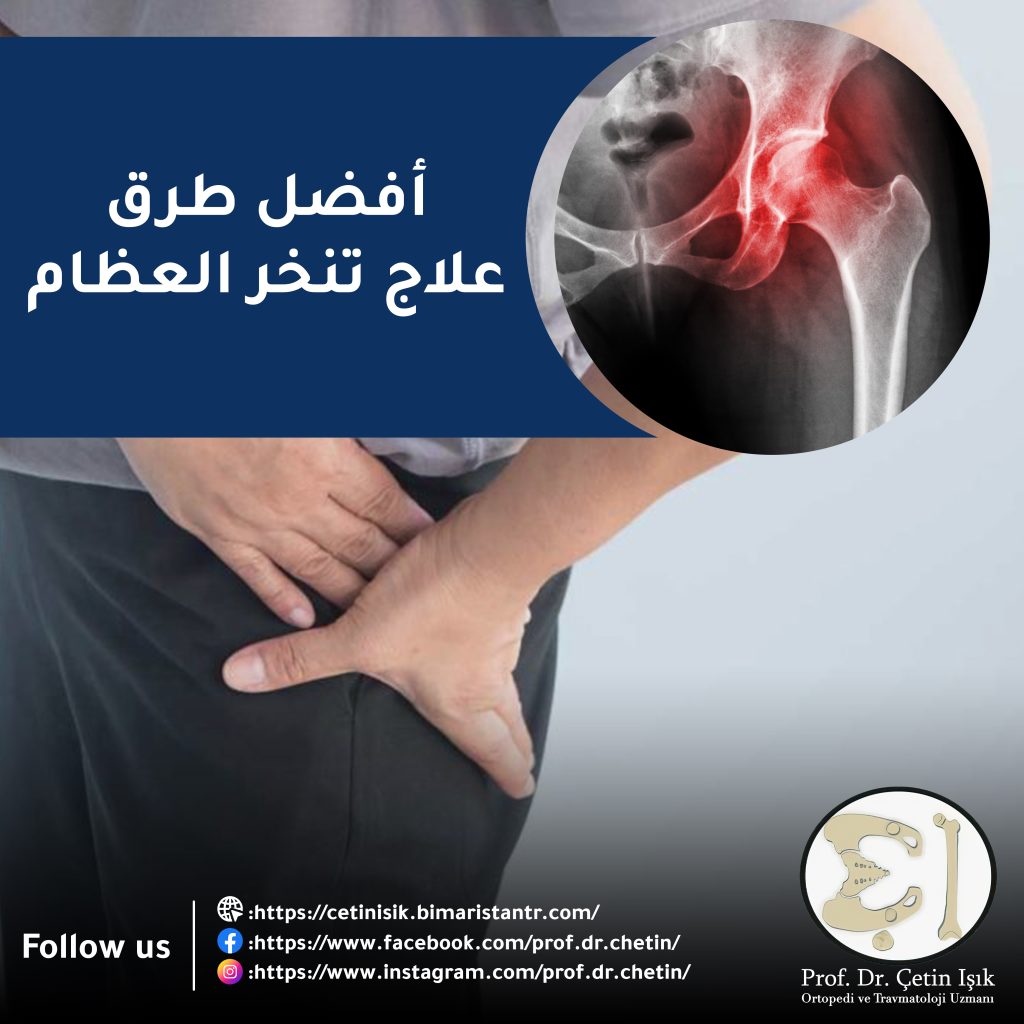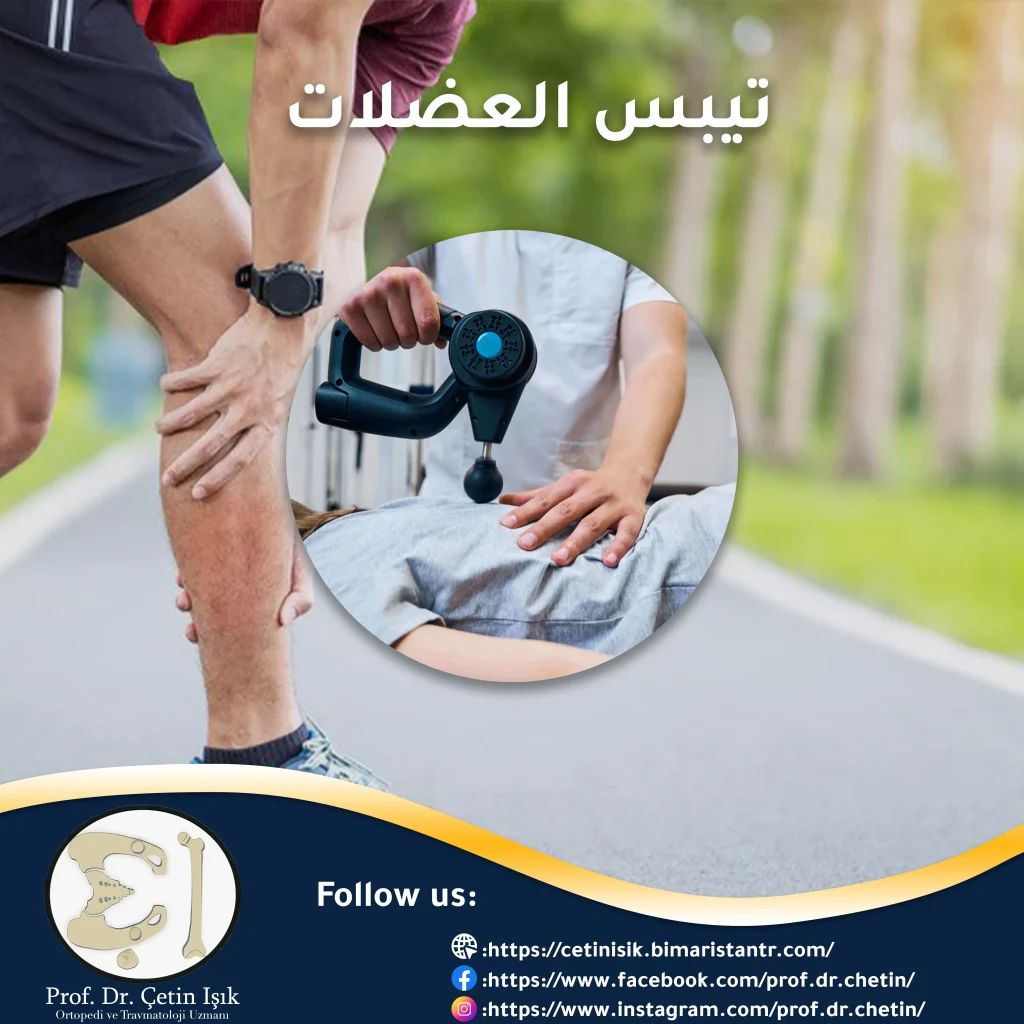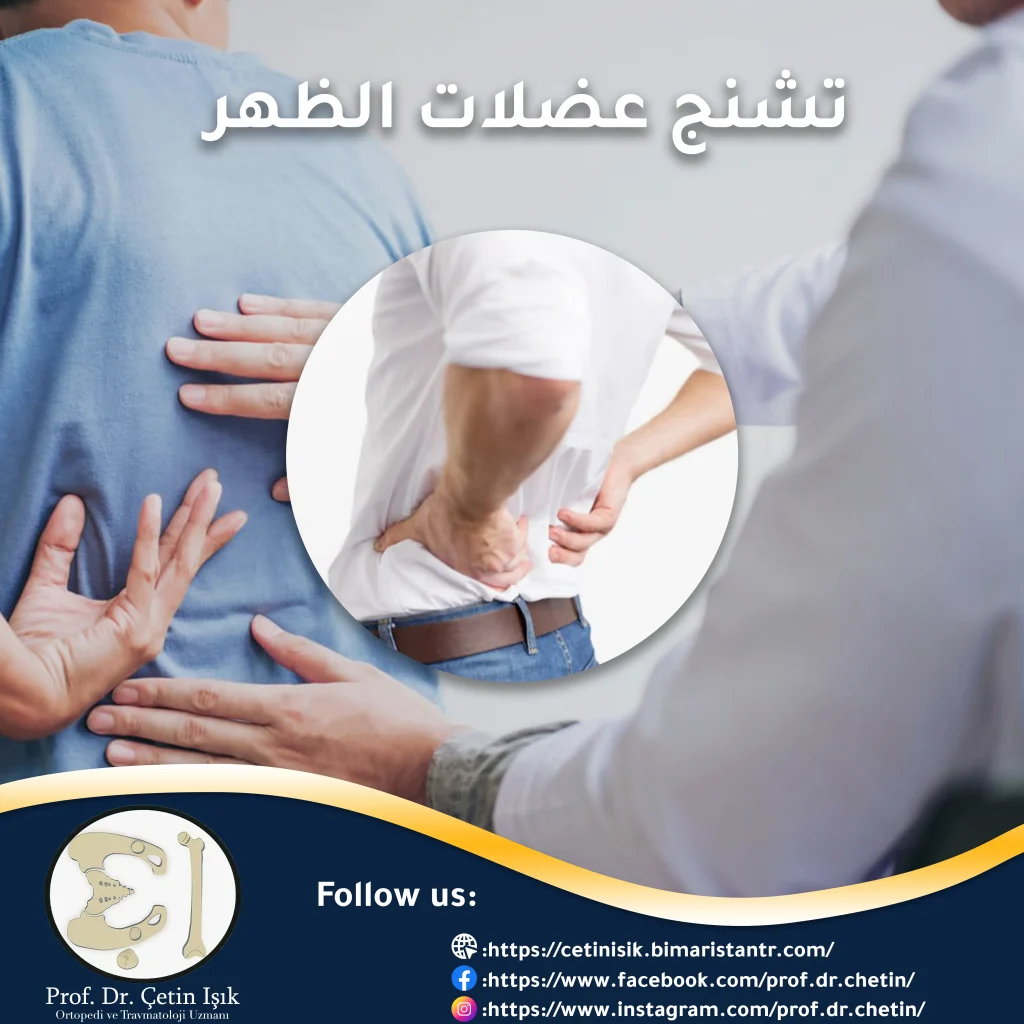Osteonecrosis is treated through conservative and surgical treatment with the aim of improving joint function and relieving pain, in addition to preventing bone damage that may lead to severe arthritis.
Non-surgical treatment is useful when detecting the condition early by slowing the progression of the condition, but most cases are detected late and therefore it is necessary to treat osteonecrosis surgically.
The danger of osteonecrosis lies in the occurrence of many problems, such as loss of bone and joint function and permanent loss of movement. Therefore, it is necessary to know the treatment of osteonecrosis in order to avoid serious complications.
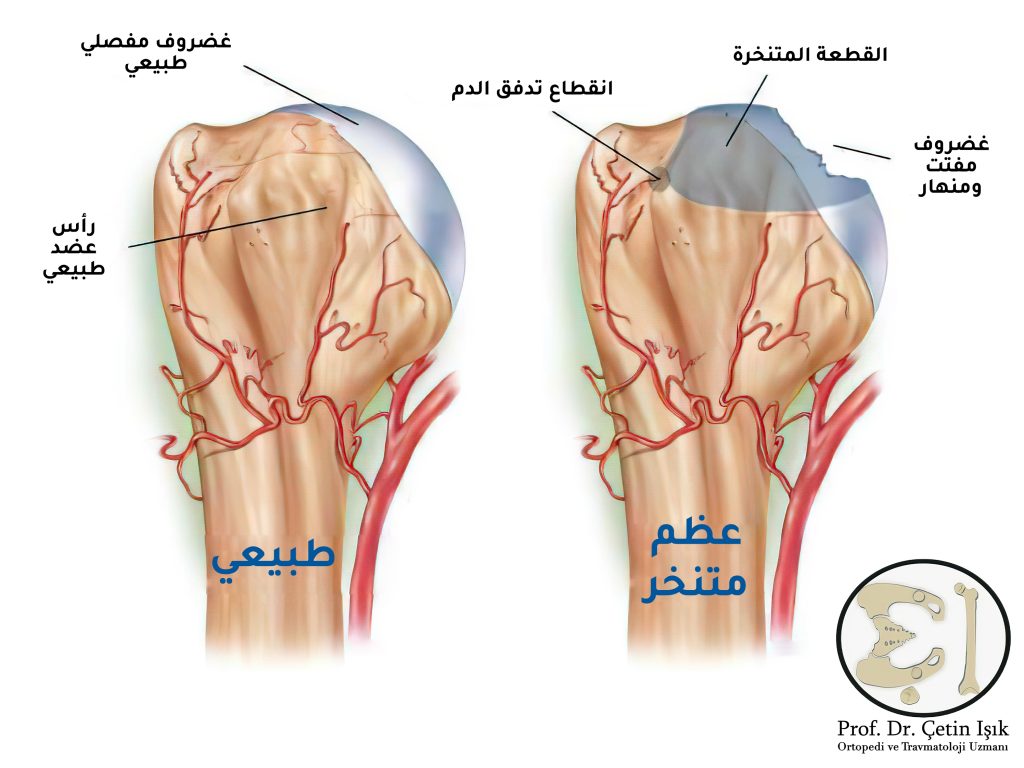
An overview of osteoporosis treatment
AVN, also known as avascular necrosis, is the death of bone cells and tissues due to a temporary or permanent lack of blood supply to the bones (blood flow to the bones), which leads to deterioration and breakdown of the bone tissue, leading to pain and limited movement.
Osteonecrosis leads to the death of bone cells, causing fibrosis (their color turns white) in addition to the expansion of the cavities (cavities) in which the bone cells are located.
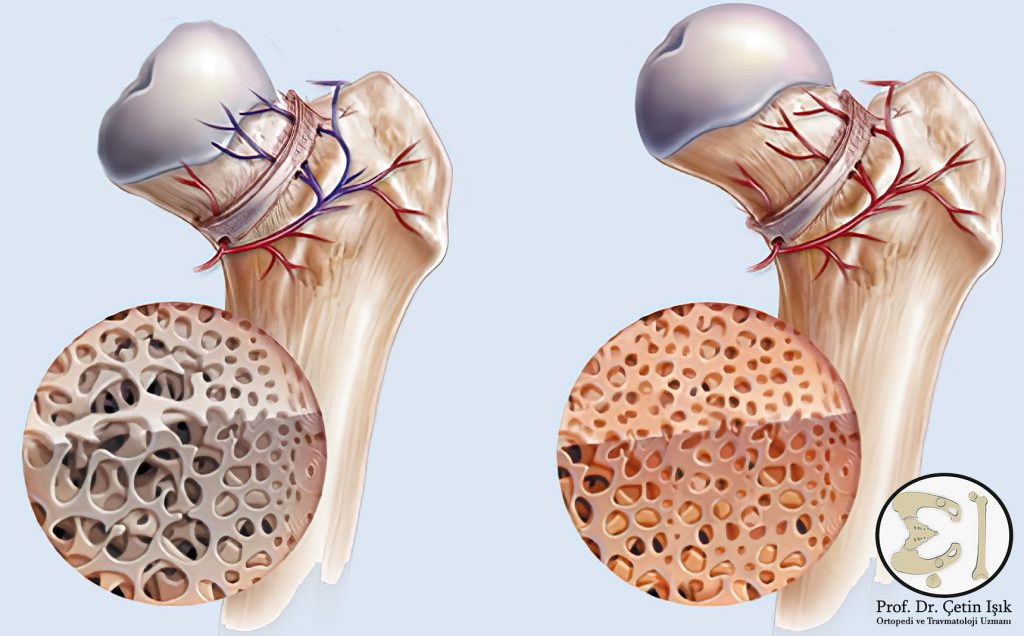
Necrosis can affect any bone in the body, but it is most common in the femur (the ends of the long bones) and the shoulder. Necrosis may affect one bone or several bones at the same time.
Fatty deposits (small pieces of fat that clog blood vessels) are one of the most important causes of bone necrosis, in addition to fractures such as femoral neck fracture andleg fracture Damage to blood vessels, prolonged use of some medications (such as corticosteroids), and excessive and constant alcohol consumption.
One of the most important symptoms of osteonecrosis is pain that occurs even at rest, in addition to limited movement and lameness when necrosis occurs in the leg bones.
Osteonecrosis can be diagnosed through history and clinical examination, in addition to radiological methods such as plain imaging, magnetic resonance imaging, computed tomography, and bone scintigraphy.

Treatment for osteonecrosis aims to preserve joint function, and osteonecrosis is often detected late because most patients do not show symptoms until osteonecrosis reaches an advanced stage.
The treatment of osteonecrosis varies according to several criteria, such as the location of the necrosis bone, the degree of necrosis, and the age of the patient. Osteonecrosis is divided according to the stage into 5 stages:
- Necrosis is asymptomatic and radiographic changes are absent, but MRI can show edema
- The first stage is in addition to the appearance of radiographic changes such as osteoporosis and subchondral cysts.
- At this stage, the articular surface is compressed so that it penetrates the circular circumference without causing significant deformation, which leads to a narrowing of the joint space, and a crescent sign appears on the plain x-ray.
- It is characterized by extensive collapse of the subchondral bone, and secondary arthritis may occur.
- At this stage both articular surfaces are affected, leading to joint dysfunction.
In addition to this, treatment of the underlying cause that led to necrosis occurs, such as treating fractures and stopping taking corticosteroids.
Non-surgical treatment of osteonecrosis
The importance of non-surgical osteonecrosis treatment lies in managing the symptoms of osteonecrosis, but in general it does not cure the osteonecrosis, but rather slows the progression of the condition. Conservative treatment options include:
- Rest and use of anti-inflammatory medications: Using anti-inflammatory medications such as non-steroidal anti-inflammatory drugs can relieve the pain and swelling that occurs.
- Taking blood thinners: Blood thinners can be used if the cause of osteonecrosis is the formation of blood clots that block blood vessels.
- Physical therapy (physical therapy): Physical therapy helps relieve joint pain and stiffness, and increases joint range of motion.
- Using crutches: Crutches are used if the osteoarthritis bones bear weight, to provide support and help relieve pain while walking.
- Corticosteroid injections: Corticosteroid injections can be used to reduce pain and swelling, and the doctor usually prescribes the lowest possible dose to achieve the desired benefit.
Surgical treatment of osteonecrosis
Most osteonecrosis patients eventually need surgery due to the worsening of the disease. In addition, most cases of osteonecrosis are diagnosed late, so osteonecrosis must be treated surgically, which is a powerful treatment for osteonecrosis.
The surgical procedures are bone decompression, bone implantation (graft), bone remodeling (osteotomy), joint replacement, and allograft implantation.
Core decompression surgery
This is the most common operation in the treatment of osteonecrosis, as the surgeon removes part of the inner layer of the bone, which reduces the pressure inside the bone and thus produces new bone tissue and blood vessels, in addition to relieving the pain.
This procedure can be combined with bone grafting in order to enhance the healing process.
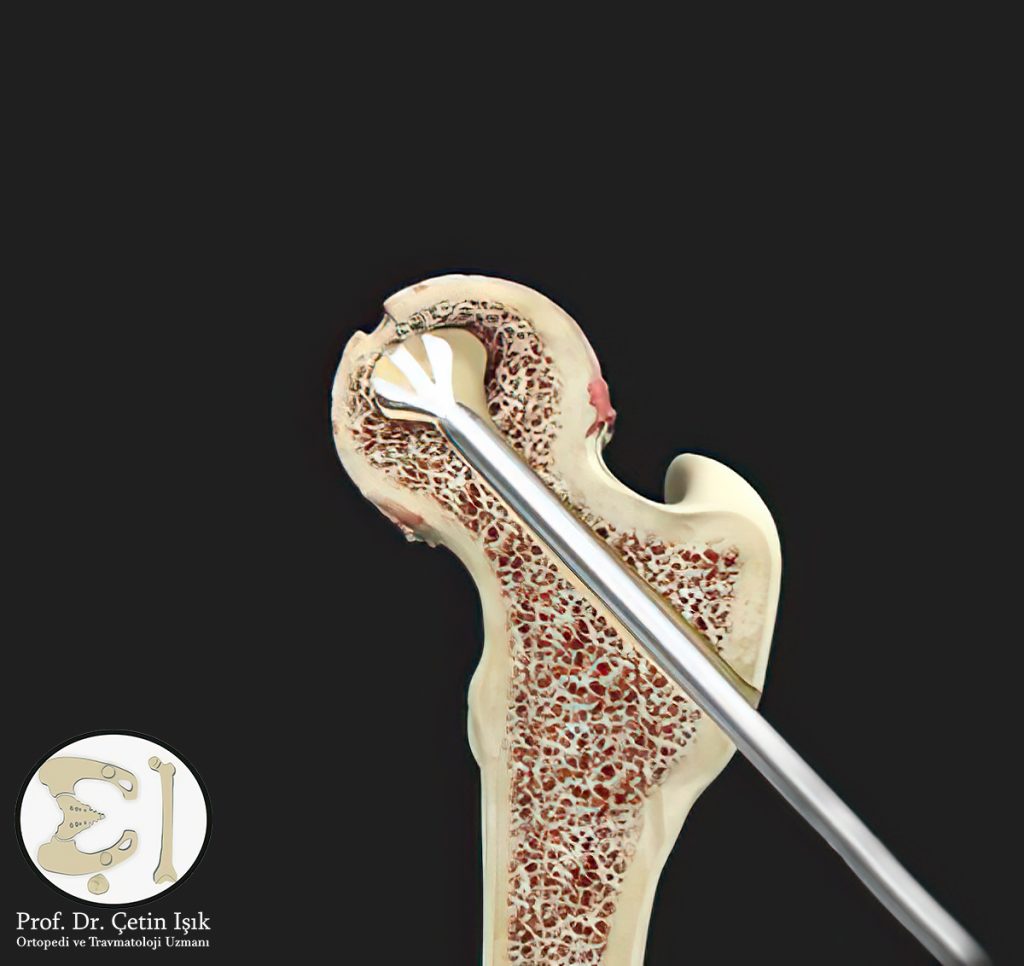
Bone graft surgery
This operation can be performed in advanced cases, where healthy bones (graft) are taken from another part of the patient's own body or from another person's body and placed in the area of the necrotic bone, which leads to strengthening the necrotic area.
Osteotomy
In this procedure, the bone wedge above or below the weight-bearing joint is removed to take the weight off the necrotic bone.
Osteotomy may be performed in cases where there are small areas of osteonecrosis.
Total joint replacement surgery
Joint replacement may be performed if the affected bone deteriorates or other treatments do not work. The damaged bone and cartilage of the joint are replaced with plastic or metal parts.
This procedure helps increase the range of motion of the joint as well as relieve pain.

Vascularized bone graft implantation
This procedure is performed to reconstruct damaged hip joints, where the surgeon removes bone with poor blood supply from the hip and replaces it with bone rich in blood supply from elsewhere, such as the fibula (one of the leg bones).

Prevention of osteoporosis
The risk of osteonecrosis can be reduced by following the following tips:
- Controlling the level of blood cholesterol: High levels of cholesterol in the blood lead to the formation of fat emboli (small pieces of fat) that block the blood vessels that nourish the bone. Fat emboli are the most common cause of bone necrosis.
- Use corticosteroids with caution: The doctor must perform frequent examinations when using steroids, and it is necessary to inform the doctor about any previous use of corticosteroids.
- Quit smoking: Smoking is an important risk factor for osteoporosis
- Avoid consuming alcohol: Excessive alcohol consumption permanently leads to osteoporosis
Treatment for osteonecrosis varies according to several criteria, such as the location of the necrosis, its stage, and the age of the patient. Non-surgical treatment can slow the progression of necrosis, but surgical treatment is still the preferred treatment for most patients because most cases are diagnosed late (advanced stage).
Sources:
Common questions
Osteonecrosis is the death of bone due to lack of blood supply, leading to bone deterioration.
The symptoms of osteonecrosis are pain that occurs even at rest and limits movement, but osteonecrosis can manifest with other symptoms depending on the necrosis of the bone, as osteonecrosis in the leg bones leads to lameness and pain when standing or walking.
Osteonecrosis can be treated through surgical procedures (most advanced cases require surgical treatment) such as decompression surgery, implantation of a vascularized bone graft, bone remodeling (osteotomy), and joint replacement surgery.
Non-surgical treatment of avascular necrosis can slow the progression of the condition upon early diagnosis of the disease, but surgical treatment remains the preferred treatment because most cases are diagnosed in the late stages.
There are many medications that cause avascular osteonecrosis or bone infarction, including: high doses of corticosteroids (prednisone) and bisphosphonates.


